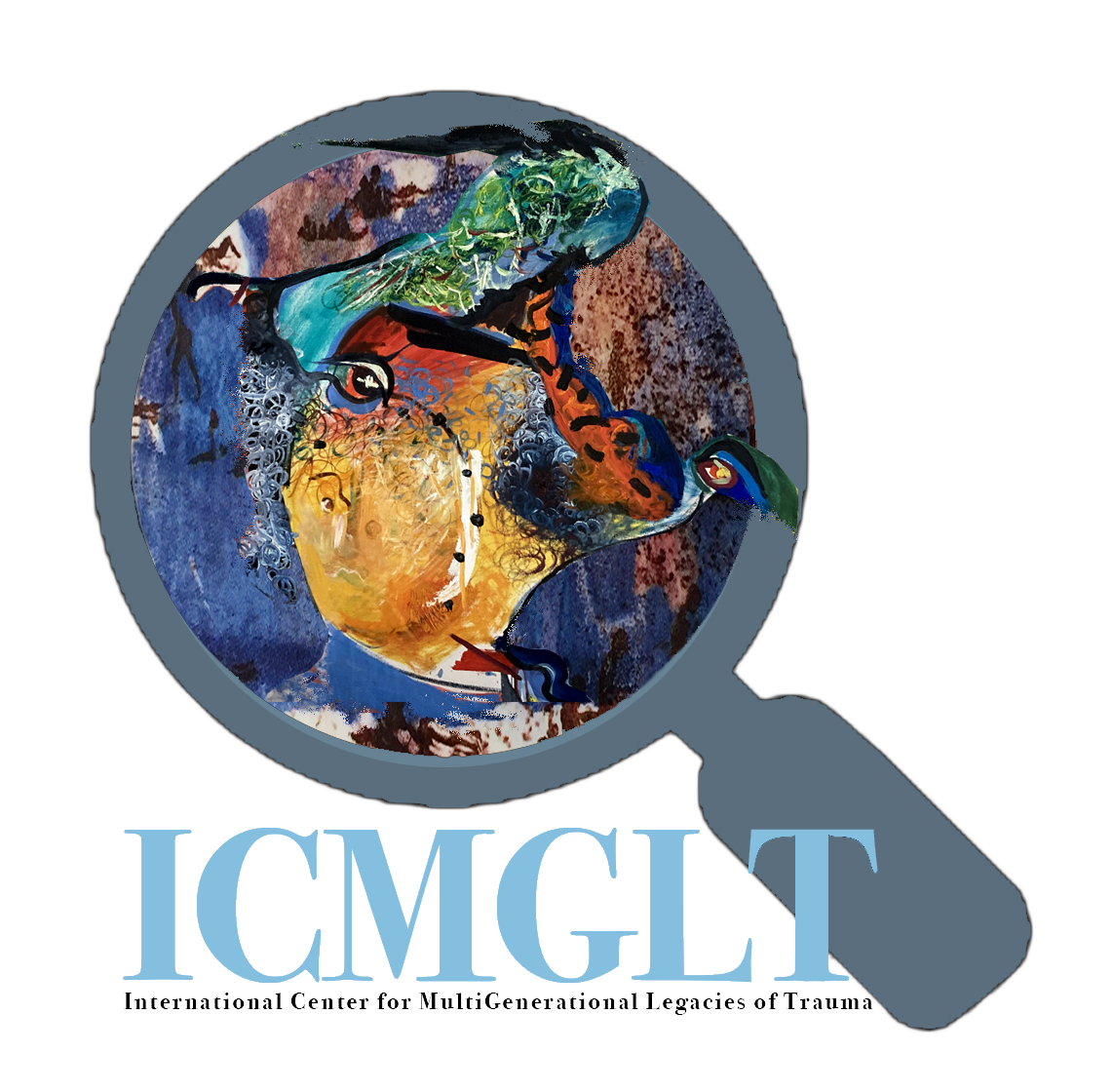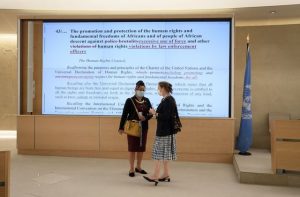Researchers and grassroots activists are working with fungi to restore damaged environments
Lauren OsterMay 12, 2025 8:00 a.m.
Ever since the HBO series “The Last of Us” hit screens in 2023, people have grilled Danielle Stevenson with their fears over a mushroom-induced dystopia. On the show, a fungus mutates and sparks a global zombie apocalypse, and as a scientist who studies fungi and how they can actually help society, Stevenson is ready to assuage their concerns.
“A common question in the public space is, ‘But if you use fungi to eat pollution, will they eat our house and our building and our faces and the whole world?’” Stevenson says.
“They will not,” she often answers. “They’re a nature-based approach to handling our waste.”
Stevenson’s work focuses on mycoremediation, a technique that uses fungi to rehabilitate polluted land. Mycoremediation harnesses fungi’s natural abilities to collect contaminants scattered in soil and either concentrate them so that they can be removed or break them down into materials that aren’t harmful.
The fungal kingdom is host to an estimated 2.2 million to 3.8 million species, ranging from single-celled yeasts to the largest organism in the world, a sprawling member of the honey mushroom genus that occupies more than 2,000 acres of soil in eastern Oregon. Once considered more similar to plants than animals, fungi can’t create their own food through photosynthesis; instead, most of them obtain nutrients from dead or decaying organic matter. To do so, fungal cells secrete enzymes that break insoluble carbohydrates down into simpler sugars that those cells can absorb and store. That ability to decompose and metabolize nutrients makes them invaluable contributors to ecosystems around the world. Fungi transform materials that plants and animals otherwise wouldn’t be able to use to their benefit.
Fungi can convert complex toxins such as petrochemicals and pesticides into simpler molecules that they and other organisms can repurpose. They also absorb and concentrate heavy metals like lead and cadmium, which remain intact in their biomass and can be relocated safely when the fungi are harvested. Workers have an easier time picking mushrooms that accumulate lead and disposing of them at a landfill, for example, than excavating and relocating tons of lead-riddled soil.
“The Last of Us”—and the video game franchise it’s based on—imagine scenarios where fungi take over the world. The reality, as Stevenson is eager to discuss as a consultant and educator, is that they can play a significant role in our environments—and they are powerful potential partners in human-led efforts to restore polluted spaces. “We can transform contaminated sites into parks, green spaces and affordable housing,” she says. “There’s just so much potential for this type of approach to work on a lot of different problems at the same time.”
Initial explorations
/https://tf-cmsv2-smithsonianmag-media.s3.amazonaws.com/filer_public/ec/8e/ec8e7515-1625-433a-8c5e-9e5a84820d22/1_danielle-with-helpers-inoculating-plots-adam-a-photo-cred_web.jpg)
Persistent human-made chemicals called chlorophenols are used to manufacture products like pharmaceuticals, agricultural chemicals and dyes that eventually become hazardous pollutants. Those byproducts—and heavy metals like lead, mercury, cadmium and chrome—can remain in the environment after serving their industrial purposes, contaminating soil and posing a threat to both environmental and human health.
Scientists’ first inkling that fungi could help solve the problems caused by these pollutants came in 1963. In the Journal of Phytopathology, plant-disease expert Horst Lyr reported that the enzymes white rot fungi use to degrade lignin—a complex polymer found in and between plants’ cell walls—could also be used to break down chlorophenols.
Around the same time, U.S. government researchers Catherine G. Duncan and Flora J. Deverall demonstrated that wood-inhabiting fungi could also be used to achieve this aim.
Researchers following in these pioneers’ footsteps zeroed in on Phanerochaete chrysosporium, a crust fungus that grows on the dying or dead parts of woody plants and forms flat, almost feathery fruiting bodies—as opposed to mushroom shapes.
They treated it as the model white rot fungus for study—much as the fast-breeding, easily alterable fruit fly has formed the basis of many geneticists’ experiments. In the crust fungus’s case, the ease and speed with which it can be grown and handled in a lab and its efficacy in breaking down lignin made it an ideal investigative focus.
By the mid-1980s, biochemists at Michigan State University were publishing evidence that, in experimental conditions, this crust fungus could degrade pollutants like the insecticide DDT, polychlorinated biphenyls and polycyclic aromatic hydrocarbons. With these findings, the field of what we now call mycoremediation research beckoned investigators around the world. In the three decades since the team in Michigan published their research, that influential work has been cited more than 1,400 times.
Mycoremediation in your neighborhood
/https://tf-cmsv2-smithsonianmag-media.s3.amazonaws.com/filer_public/1e/de/1ede17da-6ede-44c8-90df-0b6ecc85cb04/2_local-wild-oyster-mushroom-cultivated-and-used-for-wattles_web.jpg)
Mycologist Paul Stamets coined the term mycoremediation in Mycelium Running, an influential primer on growing mushrooms “for the purpose of reaping both personal and planetary rewards.” Stevenson, meanwhile, is among the grassroots activists putting mycoremediation techniques to work in her community. She serves on a council within a California Environmental Protection Agency department that protects communities from toxic substances, researches and develops methods to decontaminate land, and compels manufacturers to make safer products. She earned her PhD in environmental toxicology from the University of California, Riverside, studying three Los Angeles-area brownfields, areas where redevelopment or reuse is potentially problematic due to the presence of hazardous substances. Using previously untested combinations of fungi and plants, she and her team inoculated and seeded wood chips and soil at the sites with species intended to convert and concentrate toxic contaminants.
The initial results from that pilot study were encouraging. After just three months, she saw on average about a 50 percent reduction in all organic contaminants in the soil—such as diesel, gasoline and solvents. After a year, the contaminants were almost undetectable in treated plots. Stevenson also found that arbuscular mycorrhizal fungi—fungi that live in plants’ root tissue and collect nutrients for those plants in exchange for sugar—enhanced the plants’ abilities to take up heavy metals such as lead. That result ran contrary to previous studies that had suggested plants simply weren’t effective at removing toxins like lead from soil; in fact, all they needed was a little teamwork. Those previous studies didn’t include fungi, says Stevenson. “We saw significant reductions compared to not treating at all; depending on the metal, [it averaged between] 15 and 50 percent removal in just a year,” she says. “That’s really something.”
The City of Los Angeles funded Stevenson’s research—for good reason. The conventional method of addressing contaminated soil, known as “dig and dump,” involves hauling it up with a bulldozer, then transporting it to another disposal site. It’s disruptive, costly and time-consuming, and “dig and dump” doesn’t solve the problem of toxic materials, it just relocates them elsewhere. Soil treated with fungi, however, can be removed and incinerated or repurposed much more cheaply.
Stevenson adds the metals we’ve scattered across the country aren’t going to disappear; our responsibility isn’t to wish them out of existence but to minimize their potential for harm.
Her pilot study awaits peer review and publication. Unfortunately, there’s no shortage of opportunities for her colleagues to replicate her work; the United States is home to anywhere from 450,000 to 1 million brownfields.
“A 50 percent reduction in soil contaminants after three months of bioremediation does seem possible,” says Mia Maltz, a soil microbial ecologist at the University of Connecticut. Maltz served as the lead author on a meta-analysis of how soil inoculation with different species of mycorrhizal fungi can affect degraded ecosystems. Launched in 2023, her lab investigates how fungi and other microbes can foster ecological resilience. Maltz notes that other studies have shown reduced levels of toxins and heavy metals akin to Stevenson’s reported results within a similar time frame.
What Maltz finds interesting about Stevenson’s work is the evidence she’s collecting of how different microbes and soil conditions might enhance or hinder the uptake of heavy metals. “Having field trials like [Stevenson’s] helps to build the knowledge base of which plants are able to accumulate metals in which conditions promote their uptake,” she says.
Stevenson’s methods echo locally through an initiative in the Los Angeles Unified School District, where high school students are trained on hands-on bioremediation techniques. The project arose because some of her test sites were right next to a high school. “It’s a way of trying to get resources and opportunities into the communities most burdened by these polluted sites,” she says.
Mycoremediation in the wake of wildfires
/https://tf-cmsv2-smithsonianmag-media.s3.amazonaws.com/filer_public/82/4f/824fb661-1da5-4971-b38e-7c23d317fd28/3_ci_mauibioremediationgroup_1_web.jpg)
In the summer of 2020, a catastrophic fire in central California raged for 38 days, destroyed nearly 1,500 buildings and burned more than 86,000 acres of land. Following that initial devastation, Maya Elson—a mycologist and educator—sprang into action. She and her colleagues at CoRenewal, an environmental nonprofit group that promotes biodiversity and community-led responses to natural disasters, knew that the rainy season would send toxic runoff from devastated structures coursing down eroded hillsides to pollute local waterways and endanger aquatic life. So they installed filter socks—long, mesh tubes stuffed with absorbent straw that create physical barriers to prevent ash, sediment and chemicals from eroding and contaminating more land and water. They would also be the perfect materials for a mycoremediation project.
At about 20 different burn sites in Bonny Doon, a mountain community inland from Santa Cruz, she inoculated the filter socks with local strains of oyster mushrooms, knowing that the straw would be a fantastic food source for those mushrooms. As the fungi feasted on the straw and developed a mycelial network between its fibers, they created both a physical and a biological impediment to the toxic runoff. As in the brownfields, Elson explains, “the fungi can biodegrade petroleum-based, polycyclic aromatic hydrocarbons, and it can hold on to the heavy metals from the debris.”
That preliminary round of experimentation expanded into a larger investigation of how fungi can help heal soil after wildfire, with sites from southern Oregon all the way down to Southern California. (Many experiments have tested thesemeasures in the lab, but research from disaster sites is far rarer.) Elson and her colleagues are now looking to tackle toxins and to investigate how their inoculated filter socks might support other efforts. How could their tweaks to that existing technology, for example, assist in efforts to regenerate damaged ecosystems? They’re also looking at more types of inoculants for the world beyond their regional oyster mushrooms.
The inoculated silt-sock technique has made its way across the Pacific to Hawaii, where the Maui Bioremediation Group has put local strains of fungi to work in service of recovery from the catastrophic Lahaina fire in August 2023. That group is developing a Hawaii-specific approach to bioremediation that includes treating carbon-rich charcoal created from plant matter with a compost “tea” composed of fungi and other microorganisms collected from the same areas where they’ll be installed; they then stuff that charcoal and wood chips inoculated with Pleurotus cystidiosus (the abalone oyster mushroom) in their biofiltration socks.
Like Stevenson, Elson is anxious both to have results to present to the scientific community and to share effective remediation methodologies far and wide. “We get people reaching out to us from all over that want solutions, and we have a robust enough body of scientific research to demonstrate that these methods are worth trying,” she says. “However, it is a newer science, and we are looking to better understand the full extent of the possibilities and to refine our methodologies.”
Maltz can speak to those efforts with authority: She is the primary investigator for the multistate effort to which Elson’s Post-Fire Biofiltration Initiative project contributed. In partnership with the Glassman Lab at the University of California, Riverside, and researchers in its College of Natural and Agricultural Sciences and Department of Microbiology and Plant Pathology, the Fire Ecology in X-Site study explores how inoculation with fungi can restore fire-affected soil. As long as communities use proper protective equipment, Maltz explains, using biofiltration techniques like Elson’s have potential to support restoration after fires. “I have some concerns about using non-native species for this work, especially in burned forests or in the wildland urban interface,” she says. Bringing over local species from unburned areas near burn sites and pairing them with biodegradable onsite materials, she says, likely has the best potential for success.
As for what she believes should come next, more peer-reviewed articles highlighting those and similar approaches could expand scientists’ understanding of what’s possible. “I’d like to see more studies using native fungi, either from burned or neighboring unburned systems,” Maltz says. When fire damages land, a natural succession of plants and fungi—known as fire-following species—begins the process of regeneration. “Using some of those fungal taxa, collecting and cultivating them, and using their mycelium would be important both in lab-based studies and for field ecological experiments,” Maltz says.
Experts emphasize the importance of following best practices and honoring scientific principles while exploring solutions to planetary emergency. As the authors of a recent research review in Applied Science , an “approach must be tested on a laboratory scale before being replicated in real field situations.”
Healing beyond cease-fires
Leila Darwish, a bioremediation specialist and the author of Earth Repair, researches conflict zones and has found that in the aftermath of devastation caused by war, natural strategies have potential to assist in healing the land. A mycofiltration technique analogous to Elson’s, for example, could intercept contaminated runoff from a bombed building. Pollutants from explosives, in turn, could be broken down with fungi much as they are in industrial brownfields.
“Mycoremediation used in combination with phytoremediation, microbial remediation, biochar [toxin-absorbing charcoal created with wood and plants], and other innovative strategies can offer important tools for healing the complex, toxic and deeply damaged landscapes left behind by war,” she says.
A recent research review in the Journal of Fungi evaluating attempts at remediating conflict-affected soil between 1980 and 2023 echoes her observations. Its authors conclude that there is “vast proof of the effectiveness of fungi” for breaking down or accumulating and sequestering five classes of warfare pollutants (metals, metalloids, explosives, radioactive elements and herbicides)—and that mycoremediation doesn’t destroy soil the way decontaminating it by incinerating it does. Considering that benefit is important, they note, “given the growing demand for food and arable land.”
Mycoremediation practices won’t completely rescue us, Stevenson says, but they can connect us. “I’ve shown up to give talks that people have titled ‘Mushrooms Will Save the World!’—and it’s not that way,” she adds. “I actually think it’s better.” Looking for so-called heroes is disempowering, she says, adding that small actions taken together, locally, will always outpace individual agents of change.




